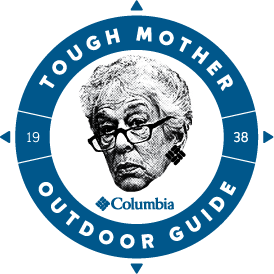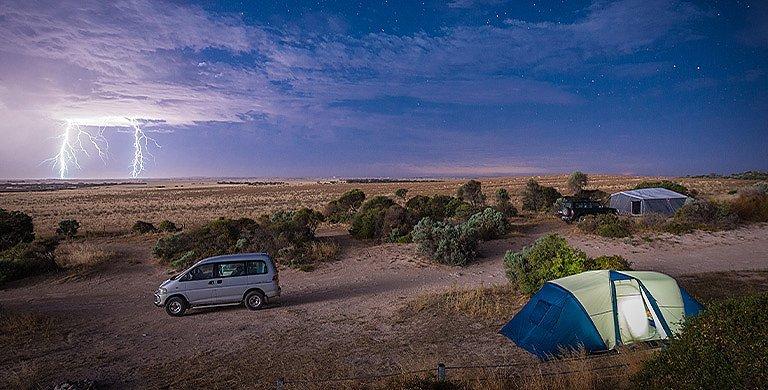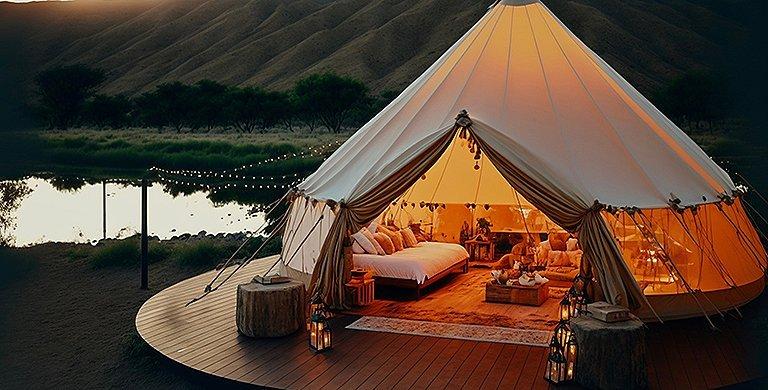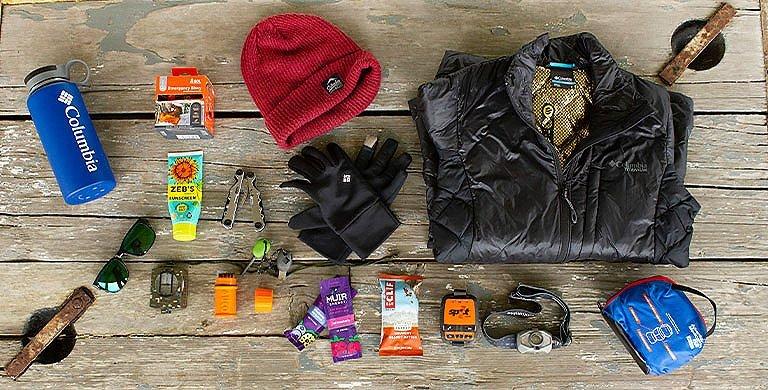CAMPING
Campfire Safety Tips for Your Next Camping Trip
Part 1 in Columbia's four-part summer camping series: an introduction to campfire safety
BY NANCY BOUCHARD
Many of us camped out in our own backyards as kids, with parents, a stocked refrigerator, and a bathroom a few steps away from our improvised tents. But then, as we got older, some of us were lucky enough to go to a summer camp to increase our outdoor skills; others hooked up with scouting groups and outdoor clubs. Eventually, we ventured out alone and with friends to test our skills in the great outdoors.
Camping is an activity that attracts people young and old, from every background, walk of life, and culture. At best, it’s an inexpensive way to escape a 9-to-5 rut and find solace from our hectic lives by heading outdoors to spend a night (or two or three) under the stars. You can sleep cowboy style (just you and the stars above), in a tent, shelter, RV, or van. Plus, there are plenty of cabins and yurts available in many recreational areas.
For those who are expert campers, and for the many more who might be considering a first or second camping trip, we’ve pulled together some expert tips to make your next camping trip safer and more fun. Whether you are car camping, exploring van life, backpacking or thru-hiking, you’ll find expert tips in our four-part summer camping series. Learn important camping skills including campfire safety, how to start a campfire, getting smoke out of your clothes, and how to wash your sleeping bags.
Camping is an activity that attracts people young and old, from every background, walk of life, and culture. At best, it’s an inexpensive way to escape a 9-to-5 rut and find solace from our hectic lives by heading outdoors to spend a night (or two or three) under the stars. You can sleep cowboy style (just you and the stars above), in a tent, shelter, RV, or van. Plus, there are plenty of cabins and yurts available in many recreational areas.
For those who are expert campers, and for the many more who might be considering a first or second camping trip, we’ve pulled together some expert tips to make your next camping trip safer and more fun. Whether you are car camping, exploring van life, backpacking or thru-hiking, you’ll find expert tips in our four-part summer camping series. Learn important camping skills including campfire safety, how to start a campfire, getting smoke out of your clothes, and how to wash your sleeping bags.
Campfire Safety
Even before you start your first campfire, you’ll need to know about campfire safety. Out of control campfires are one of the leading causes of wildfires. Campfires that become wildfires destroy natural resources, communities, and in the worst-case scenario, kill birds, animals and humans. The old Smokey the Bear slogan, “Only You can Prevent Forest Fires,” is still true today.
To learn more about campfire safety, we spoke with Mark Thibideau, Fire Communications Specialist with the Pacific Southwest Region of the USDA Forest Service. “If I were to put an importance on how seriously someone should take campfire safety on a scale of 1 to 100 with 1 being no care whatsoever and 100 being extremely serious, I would say 200!,” says Thibideau.
Thibideau acknowledges that campfires are a great way to enjoy the ambiance of the outdoors. “They are useful for the glow of the light from the flames. The warmth from the heat can keep you cozy while enjoying the great outdoors. Cooking anything over a fire tastes better in my opinion,” he says. But he stresses that you don’t need a large fire for any of the benefits described. “A small fire with small wood pieces can give you light, keep you warm, and cook anything,” says Thibideau. “Keep them small so they are enjoyable and leave no trace!”
To learn more about campfire safety, we spoke with Mark Thibideau, Fire Communications Specialist with the Pacific Southwest Region of the USDA Forest Service. “If I were to put an importance on how seriously someone should take campfire safety on a scale of 1 to 100 with 1 being no care whatsoever and 100 being extremely serious, I would say 200!,” says Thibideau.
Thibideau acknowledges that campfires are a great way to enjoy the ambiance of the outdoors. “They are useful for the glow of the light from the flames. The warmth from the heat can keep you cozy while enjoying the great outdoors. Cooking anything over a fire tastes better in my opinion,” he says. But he stresses that you don’t need a large fire for any of the benefits described. “A small fire with small wood pieces can give you light, keep you warm, and cook anything,” says Thibideau. “Keep them small so they are enjoyable and leave no trace!”
Here are some expert tips for making sure your campfires are built right and safely extinguished.
1. Check Local Regulations
Always check local (and the most up to date) regulations. When conditions are too hot, dry or windy, there may be bans on open fires. Even if there’s no ban, stay informed on current and predicted weather forecasts. Do not have a campfire when there’s wind.
2. Clear Away Debris
Clear away anything that’s near the fire area including sticks, pine needles, grass, tents, camping gear and cars.
3. Pick a Safe Location
If a campfire is allowed, make sure you are building it in a safe spot. That means away from trees, cars and structures. As always, exercise situational awareness; remember that sparks and embers can travel for miles in windy conditions. Pick an open area with no overhanging branches. Ideally, you’ll find a spot that is flat, out of the wind, and surrounded by bare soil, sand or rocks.
4. Use a Fire Pit
Use an existing fire pit if possible. Most campgrounds and recreation areas have pre-built fire pits. Even if you are camping off-the-beaten-path, in the backcountry, chances are high that there are pre-established rock fire pits in popular campsites. If you can’t find an old fire pit (or one in a safe place), you can often use rocks to make a circle. If you are in a lightly traveled area where a fire pit looks out of place, scatter the rocks when you are done with them so that you leave no trace.
5. Have a Plan For Putting the Fire Out
Have a plan for extinguishing the fire. You’ll need water, a shovel and ideally, a fire extinguisher in case something does go horribly awry. If you are car camping, then you should already have those items in your safety kit. If you are in the backcountry, you’ll need to pack a trowel, and have access to a water source so you can put the fire out.
6. Make Sure You Put the Fire Fully Out
Extinguishing a campfire is much more difficult than starting one. You’ll want to douse it with water, make sure all the ashes are wet, and repeat the process until the ashes are cold. Remember, never leave a campfire unattended; it has to be out before you go to sleep for the night. The NFS and USFS recommend that you have a bucket and access to five gallons of water to fully extinguish a campfire.
7. Drown the Fire
The recommended method of making sure a fire is out is called the Drown, Stir, Feel process. You drown the campfire with water, stir it with the shovel, and feel the blackened coals for heat. If heat exists repeat the process until no heat is felt! Then you will know that your campfire did not turn into a wildfire. While covering the fire with dirt will put it out (it’s true a fire needs oxygen to remain active), drowning a fire with water removes the heat so that it can’t accidentally reignite. Keep the fire in the fire pit!
8. Don’t Hesitate to Call 911 in an Emergency
If you do run into a problem (meaning that if your campfire does somehow manage to get out of control or you see a campfire that has jumped to surrounding grass or brush) don’t hesitate to call 911. Get help fast. The goal is of course to take the precautionary steps to not get into this situation in the first place but in the event it does happen the most important concern is for you and your loved one’s safety. Protect yourself from the heat of the fire and call or help immediately! One of the most important pieces of information that you can provide to a 911 dispatcher is the location of the fire and the best way to access it.
9. Maintain Situational Awareness
Also, whenever you are camping, always have an escape plan in place. Situational awareness is key to safety (whether it is for wildfires, flash floods, or lightning storms), pay attention to the weather and stay tuned to forecasts. Be aware of your surroundings, and always know how you’d make it to safety, even if the road you drove in becomes blocked. Remain calm and make decisions that will keep you alive.
The next time that spending a night under the stars (or in a tent, RV, or van) is in your plans, up your comfort level with a Columbia fleece jacket.



